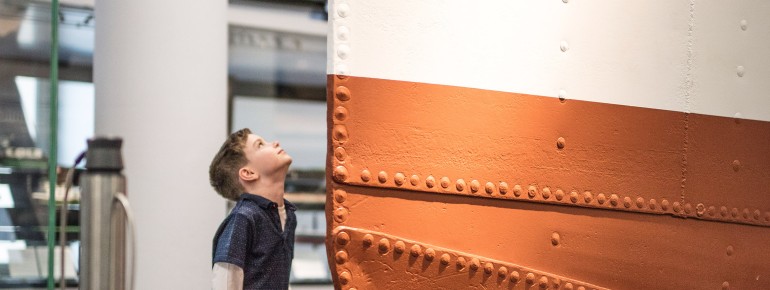Contents
Description
At the "Verkehrsmuseum Dresden", near the Frauenkirche and the Residenzschloss, an exploration tour through the history of transportation awaits you. The museum houses an impressive collection of over 300,000 exhibits, including historical vehicles, models, posters, and documents. Whether it's transportation on rivers, seas, roads, rails, or in the skies, the museum guides visitors step by step through how humans have become more mobile over time.
Rail Transport:
The exhibition of historical trains showcases the largest exhibits of all. Visitors can see, among other things, the world's most powerful railway engine and the first German steam locomotive. In some of the trains, you can even step inside and imagine yourself as a locomotive engineer. The exhibition is complemented by one of the largest model railways in Europe.
Road Transport:
The museum also offers deep insights into the history of road transport. Models, photographs, and interactive displays tell the story of public transportation. The Automotive Museum houses a collection of cars from various epochs, illustrating the development of road transport from the late 19th century's first motorized vehicles to the latest models.
Air Transport:
Another exhibition area is dedicated to the history of aviation. At the center of the exhibition, you can explore figures of German aviation pioneers. The exhibition allows you to learn fascinating stories about the trailblazers and admire airplanes from past eras. Additionally, you'll come across groundbreaking inventions that have profoundly influenced the aviation industry.
Maritime Transport:
In the Maritime Transport exhibition area, you get an overview of the development and technology of inland and sea shipping. With numerous historical exhibits, old pictures and films, as well as accounts from eyewitnesses, the exhibition highlights how shipping has significantly impacted the lives of many people and remains essential to this day.
Interactive Experiences:
To make the visit to the Transport Museum particularly interesting for families with children, numerous interactive stations are offered. Through simulations, you can, for example, step into the role of a locomotive engineer, tram driver, or pilot. In the Aviation Experiment Room, children are introduced to exciting experiments that explain why airplanes can fly. "Museumsausgaben- Rätselspaß mit Flitzi" allows families to explore the museum independently through exciting tasks and puzzles. In the museum's experience area, children can playfully learn about traffic rules on an exciting Bobbycar course.
Special Exhibitions and Events:
To ensure that even regular visitors can discover something new, the Dresden Transport Museum regularly hosts changing special exhibitions on specific topics of transportation history. Workshops and lectures are also offered for all age groups.
Historical Information
The history of the Dresden Transport Museum began in 1952 when it was initially founded as the Museum for Transport and Technology. Since then, it has evolved into one of the most significant institutions of its kind in Germany. The museum was originally located in the Johanneum at Neumarkt in the Dresden Old Town. Over time, the collection grew steadily, leading the museum to move to the Johanneum at Pillnitzer Platz in 1956, where it remains to this day. The Johanneum, once used as stables for royal horse-drawn carriages, is located in the heart of Dresden's Old Town.
Interesting facts
- The day pass at Transport Museum Dresden is €11 making it one of the 5 cheapest tourist Attractions in Saxony.
How to get there
By Car:
The Dresden Transport Museum is located near the Dresden Hauptbahnhof (main train station). Parking spaces are limited, so it is advisable to arrive early.
By Public Transportation:
From Dresden Hauptbahnhof, it's only a short walk to the Transport Museum. Alternatively, you can take the tram. Get off at the "Dresden Hauptbahnhof" stop and follow "St. Petersburger Straße." Turn right onto "Augustusstraße," and you'll see the Transport Museum.


























